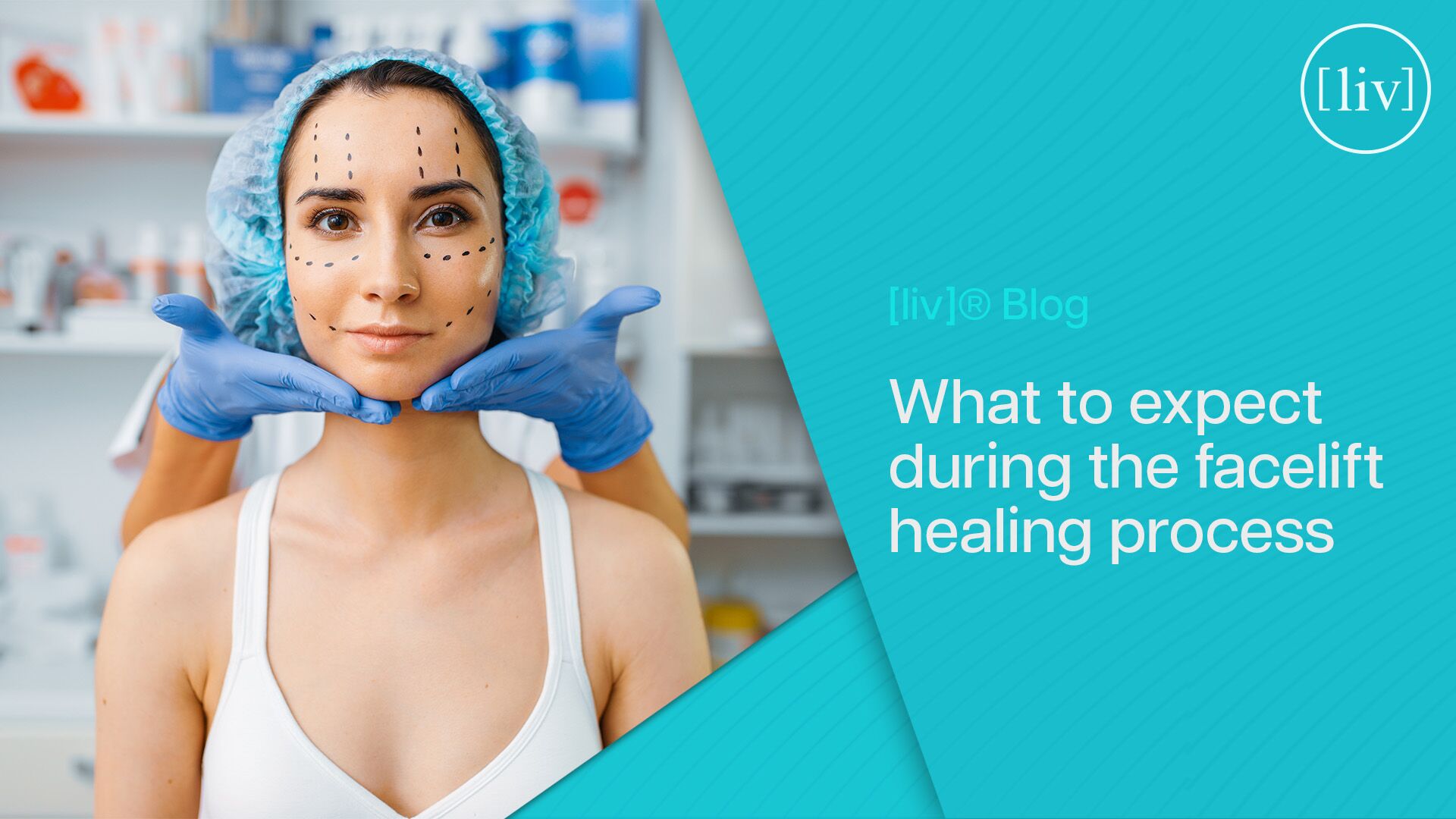Celebrate Mother's Day with Dr. Andrew Ress at [liv]
May 08, 2025
Shine Bright This Holiday Season: Unveil Your Best Self!
December 18, 2024

Facelift recovery is a healing time after facelift surgery procedure that helps improve the signs of aging on your face and neck.
A facelift is usually focused on the bottom two-thirds on the face and sometimes the neck, and the most common reason to get a facelift is to help disguise the signs of aging.
If you happen to consider undergoing a facelift, you should know that even though a few months is enough to begin seeing the final results, you should know that the facelift recovery time is much longer and dependant on various factors.
If you want to know what you can expect during a typical facelift recovery period, how does it look on a day to day basis and what facelift recovery tips can we provide you with – read the text below and find out.
Once the procedure is done, your facelift surgery recovery starts with a bandage that can be placed all around your face to minimize the bruising and swelling. Aside from bandage, small tubes might also be present to draw off any excess blood or fluid.
You should expect to get special instructions on how to take care of the drains, medications to apply or take orally, or any specific concerns you should pay attention to in regards to your general health.
When it comes to recovery after facelift, it is fairly difficult to determine the exact number of recovery days as they are dependant on various factors such as age, health and the exact procedure type performed on the patient.
Here we will provide you with an approximate 30 – day guide that concerns facelift recovery time and that will provide you with some useful information on what can you expect during this period.
Facelift recovery during week one starts with taking care of the postoperative incisions and keeping them clean in order to prevent infection.
Over this period of time you are likely to have some more bruising and swelling over the affected areas, which can cause the sensations of numbness,tingling and tightness.
These sensations are common during the facelift healing process, and should not worry you. By the end of the second week you will start feeling like your normal self, so you can back to work and other day to day activities.
Facelift recovery period in the weeks three and four is when some advanced facelift healing takes place. By the end of week one to week three, you should expect your sutures removed, depending on your individual facelift recovery progress.
When you hit weeks three and four, you will still have some residual swelling and tightness, but it will look much better for the most part. This is the phase of facelift recovery when most patients see the results of the procedure more clearly, and also the time when you can come to exercising and going out in public.
Your treatment area will become less noticable for everyone around you, only the incision sites will remain a little pinkish, but that will also fade.
The 30 day timeframe is general, as everyone’s experience is different in terms of facelift healing progress.
When you hit the 30 day mark, you should be back to your normal, everyday rhythm, going to work and hanging out with people. When it comes to remaining signs of swelling and bruising, it takes up to a year for them to be completely gone, but they are typically only noticeable to you the entire time.
As facelift procedure is quite intense due to sensitivity of affected areas, both during and post op, still it is very well tolerated in general, especially if you follow post-op instructions that were given to you by your surgeon, and here are some of them.
A proper fluid intake is highly important when it comes to facelift healing patients, mainly because it makes the whole process faster and more efficient, not to mention it keeps your cells revitalized.
Drinking plenty of water is important because it also ensures that all the toxins and waste products are flushed out of your system.
Vitamins, minerals and proteins are key to cellular regeneration, which is why a healthy diet is crucial for better results during the facelift recovery time. Be sure to have a steady intake of soy, non-fat milk, and lean white meat.
Having enough sleep and rest ensures that all the building blocks provided by water and food intake are actually used, but in order to do that efficiently, you mustn’t sleep in just any position.
You need to sleep with your head in an elevated position, as this is how you avoid any fluids being stuck in your face, which is the ultimate cause of swelling. You should be sleeping at 45- 90 degrees position, which will help the fluids flow away faster and speed up the facelift healing process.
Even though you will have medical wrapping around your face in order to prevent infection, it still needs to be replaced regularly in order to keep doing that.
If you start to feel itchy on your face, that means that facelift healing process is going well, but if you do succumb to temptation and scratch them, you will not only remove all the new skin but also potentially cause the underlying tissue to react aggressively by healing unevenly.
Good news is that you can be easily relieved of these symptoms by many oral or topical prescriptions, and if you need to remove any excess skin – do it under the shower, using a light dabbing motion.
However, the most important facelift recovery tip we can give you is to schedule the procedure with a board certified surgeon, like our Dr. Ress, that will personally discuss your goals and expectations, so you can make an informed decision, but also make sure you go back home with the results you hoped for.
When it comes to mini facelift recovery, the main differences in techniques and facelift recovery after that depend on the surgeon, but ultimately is faster than the classic procedure, with minimal swelling and very few side-effects.
The procedure is dubbed the “quick lift” as it addresses the wrinkles and sagging skin on the lower third of your face, concentrating on the jaw, chin, cheeks and marionette lines.
If you think about getting a facelift, remember that it’s always the best to do your research, take all the necessary precautions, and follow your surgeon’s post-op care regimen “to a t”, in order to go through the easiest facelift recovery process and obtain the best possible outcome.
Always communicate with your surgeon about everything that concerns or scares you, and always let them know about any post-surgery symptoms that you feel are out of the ordinary.
May 08, 2025
December 18, 2024
Copyright © Liv Plastic Surgery 2026. All Rights Reserved

Consultations are complimentary in person or virtual.
We love our out of town patients!
